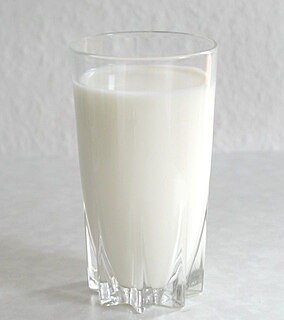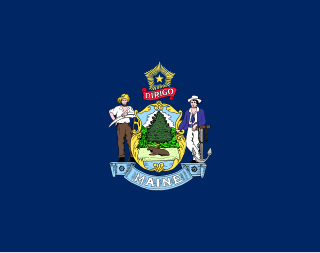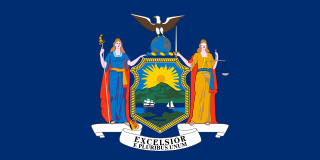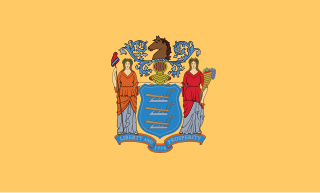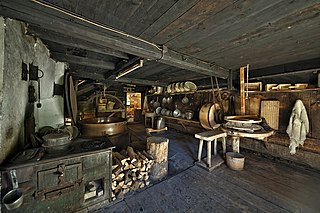
A dairy is a business enterprise established for the harvesting or processing of animal milk – mostly from cows or goats, but also from buffaloes, sheep, horses, or camels – for human consumption. A dairy is typically located on a dedicated dairy farm or in a section of a multi-purpose farm that is concerned with the harvesting of milk.

The Federal Agriculture Improvement and Reform Act of 1996, known informally as the Freedom to Farm Act, the FAIR Act, or the 1996 U.S. Farm Bill, was the omnibus 1996 farm bill that, among other provisions, revises and simplifies direct payment programs for crops and eliminates milk price supports through direct government purchases.
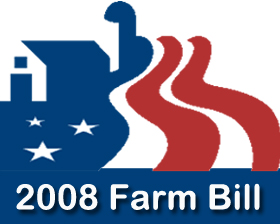
In the United States, the farm bill is the primary agricultural and food policy tool of the federal government. The comprehensive omnibus bill is renewed every 5 years or so and deals with both agriculture and all other affairs under the purview of the United States Department of Agriculture.
A basing point is a geographical site used to establish minimum fluid milk prices for federal milk marketing orders. Generally, minimum fluid farm milk prices increase according to the distance from the basing point. When federal milk marketing orders began in the 1930s, Eau Claire, Wisconsin was viewed as the principal surplus milk production region in the nation and hence served as the basing point for most milk priced under federal milk marketing orders. Generally, the further a region is from the Upper Midwest, the higher that region’s minimum price for fluid farm milk. Some have argued that there currently are other surplus production regions in the country which should serve as basing points. An attempt by USDA to establish a pricing structure using multiple basing points was thwarted by legislation in 1999.
Classified pricing is the pricing system of federal milk marketing orders, under which milk processors pay into a pool for fluid grade milk. The price that processors have to pay into the pool is based on how the milk ultimately is used. Milk used for fluid (Class I) consumption generally receives the highest price and lower minimum prices are paid for the three classes of milk used for manufactured dairy products: Class II, Class III (cheese), and Class IV.

The Food, Agriculture, Conservation, and Trade (FACT) Act of 1990 — P.L. 101-624 was a 5-year omnibus farm bill that passed Congress and was signed into law.

The Dairy and Tobacco Adjustment Act of 1983 is a United States federal law.
In the United States, the Dairy Price Support Program is the federal government program that maintains a minimum farm price for milk used in the manufacture of dairy products. It is one of many agricultural support programs. Under the dairy program, the United States Department of Agriculture (USDA) indirectly assures a minimum price for milk by purchasing any cheddar cheese, nonfat dry milk, and butter offered to it by dairy processors at stated prices. These purchase prices are set high enough to enable dairy processors to pay farmers at least the support price for the milk they use in manufacturing these products.
The Dairy Promotion Program or National Dairy Checkoff is a US commodity checkoff program for dairy product promotion, research, and nutrition education as part of a comprehensive strategy to increase human consumption of milk and dairy products and to reduce dairy surpluses.
The Dairy Termination Program or the "Whole Herd Buyout" is a program created by Cooperatives Working Together (CWT). Participating farmers must submit their entire herds to slaughter. The farmer is then compensated for the amount of milk that animal would have produced over the course of one year. CWT acquires funding from cooperatives throughout the country who aim to raise the price of milk. CWT receives no federal funding.
In United States agricultural policy, utilization rates refer to the percentage of milk in federal milk marketing orders that is used in each of the classes: Class IV, Class III (cheese), Class II, Class I. Utilization rates serve as weights for determining the weighted average price, or blend price, received by dairy farmers within a region each month.

The Food Security Act of 1985, a 5-year omnibus farm bill, allowed lower commodity price and income supports and established a dairy herd buyout program. This 1985 farm bill made changes in a variety of other USDA programs. Several enduring conservation programs were created, including sodbuster, swampbuster, and the Conservation Reserve Program.
The Southern Dairy Compact was an agreement between thirteen states in the southern United States. It was proposed to ensure the continued marketability of dairy producers in the member states and to supply a stable, local supply of milk products to the region. The proposed agreement was modeled on the Northeast Interstate Dairy Compact, that would allow member states to jointly establish a minimum farm price for fluid milk that is above the federally mandated minimum price level in the region.
The National Fluid Milk Processor Promotion Program was first authorized by the Fluid Milk Promotion Act of 1990. Fluid milk processors through a commodity checkoff program develop and finance generic advertising programs designed to maintain and expand markets and uses for fluid milk products produced in the United States. The mandatory national fluid milk program is financed by a 20¢ per hundredweight assessment on all fluid milk processed and marketed commercially in consumer-type packages. Fluid Milk Board annual revenue is approximately $110 million.
The Minnesota-Wisconsin price, prior to May 1995, was a component of the basic formula price for farm milk formerly used in federal milk marketing orders. It represented a survey of the average price Minnesota and Wisconsin plants were paying farmers for Grade B milk to be used in processed dairy products. In 1995, the M-W price was replaced with the basic formula price as the price mover under federal milk marketing orders.
Milk Income Loss Contract (MILC) Payments is the name given by USDA to the dairy farmer counter-cyclical payments program, authorized by the 2002 farm bill. Under the program, dairy farmers nationwide are eligible for a federal payment whenever the minimum monthly market price for farm milk used for fluid consumption in Boston falls below $16.94/cwt. A producer potentially can receive a payment equal to 45 percent of the difference between the $16.94 per cwt. target price and the market price, in any month that the Boston market price falls below $16.94. A producer can receive a payment on all milk production during that month, but no payments will be made on any annual production in excess of 2.4 million pounds per dairy operation. On average this limit is reached by a milking herd of 130 cows. MILC payments apply to production beginning December 1, 2002 through September 30, 2012.
Marketing orders and agreements in United States agricultural policy allow producers to promote orderly marketing through collectively influencing the supply, demand, or price of a particular commodity. Research and promotion can be financed with pooled funds.
In Canadian agricultural policy, the Market Sharing Quota (MSQ) is the federally determined target for the amount of industrial milk to produce nationwide each year as part of its policy of supply management. It is determined by estimating the domestic demand for dairy products on a butterfat basis, adding about 3% to cover exports and subtracting the volume of approved imports. Provincial shares of the national quota are adjusted in line with changes in the total and each province allocates its share to its producers according to its own quota policies. The Canadian Dairy Commission sets a target price for industrial milk based on production costs, including a return to labour, capital and management. Dairy farmers receive a payment from their provincial marketing board on in-quota deliveries of industrial milk. Farmers who produce in excess of their quota do not receive payments and in some provinces, may face a financial penalty. Each province maintains and administers its own quota scheme for fluid milk.
The Fluid Milk Promotion Act of 1990 the designation given to Subtitle H of Title XIX of the Food, Agriculture, Conservation, and Trade Act of 1990. Subtitle H authorized the establishment of a national fluid milk processor promotion program, or commodity checkoff program for fluid milk promotion. The program is funded through a 20¢/cwt. assessment on all milk processed for fluid consumption.
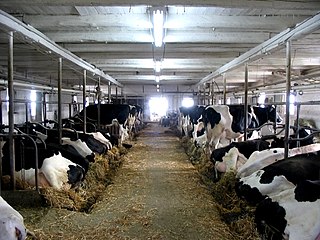
Supply management (SM) is a national agricultural policy framework used in Canada that coordinates supply and demand of dairy, poultry and eggs through production and import control and pricing mechanisms designed to prevent shortages and surpluses, to ensure farmers a fair rate of return and Canadian consumer access to a high-quality, stable, and secure supply of these sensitive products.


